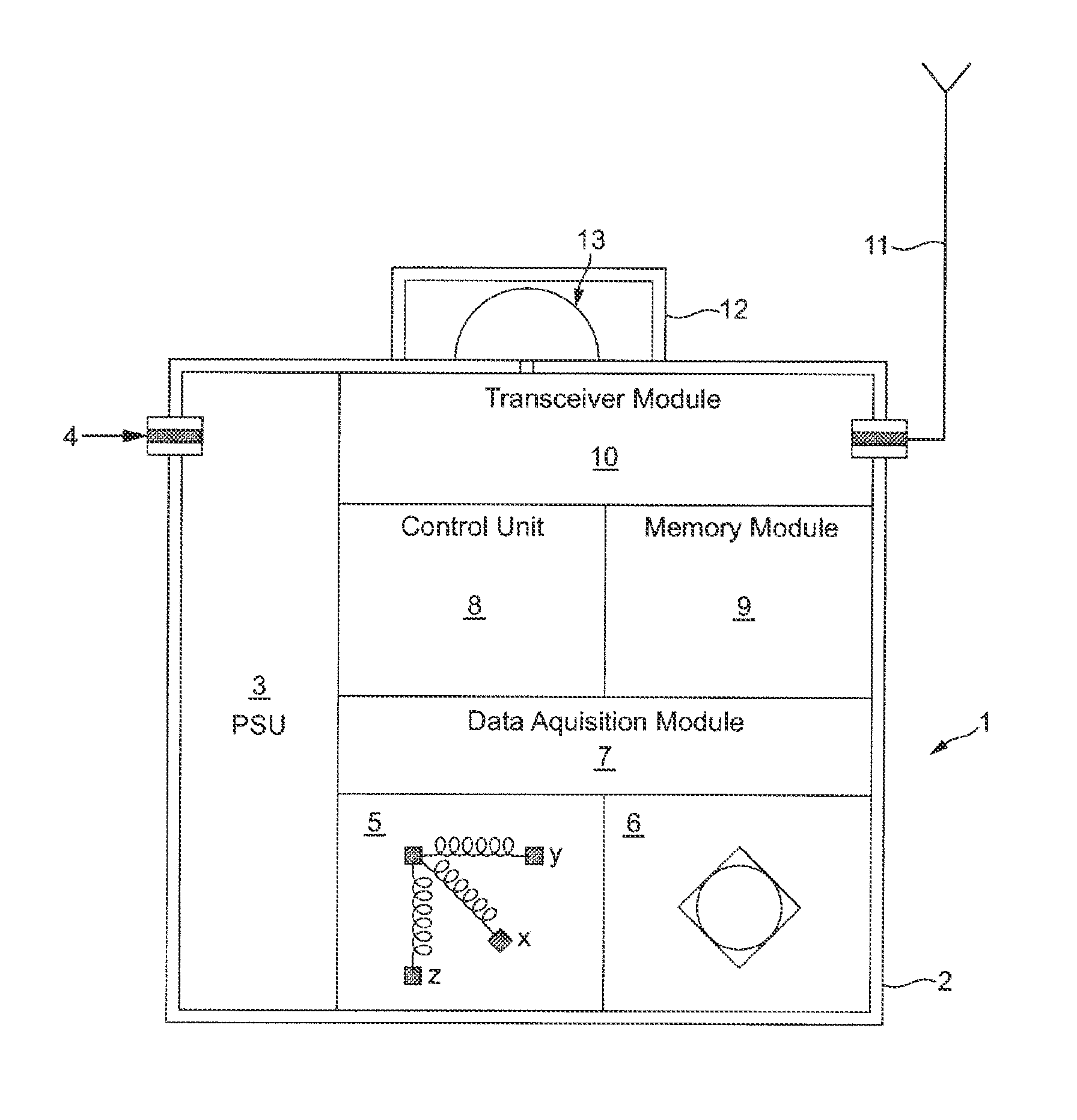Wireless subsea seismic sensor and data collection methods
a seismic sensor and data collection technology, applied in seismology, transmission, geological measurements, etc., can solve the problems of large capital costs, large cabling, carrying power and communications between the sensors, and the inability to accurately place the strings of seismic sensors in the array on the seabed. , to achieve the effect of eliminating costly wiring, reducing the cost of communication, and convenient deploymen
- Summary
- Abstract
- Description
- Claims
- Application Information
AI Technical Summary
Benefits of technology
Problems solved by technology
Method used
Image
Examples
Embodiment Construction
[0017]FIG. 1 is a block diagram of a seismic sensor 1 according to an embodiment of the present invention. The sensor 1 comprises a waterproof and pressure-resistant housing 2 enclosing the sensor's electronic modules. A power supply unit (PSU) 3 is provided with rechargeable batteries to supply power to the modules. The PSU may be connected to an external power supply, which can also be used to recharge the internal batteries, via a connector 4. The sensor includes a 3-component geophone 5 to respond to 3-dimensional physical displacement of the sensor and a hydrophone 6 to respond to water pressure variations. In operation, signals from the geophone 5 and hydrophone 6 are passed to the data acquisition module 7. A control unit 8 manages the data acquisition and storage of the data in a memory module 9. The control unit 8 also manages the receipt and transmission of control signals and data to and from external sources via a transceiver module 10 and an antenna 11. The sensor is pr...
PUM
 Login to View More
Login to View More Abstract
Description
Claims
Application Information
 Login to View More
Login to View More - R&D
- Intellectual Property
- Life Sciences
- Materials
- Tech Scout
- Unparalleled Data Quality
- Higher Quality Content
- 60% Fewer Hallucinations
Browse by: Latest US Patents, China's latest patents, Technical Efficacy Thesaurus, Application Domain, Technology Topic, Popular Technical Reports.
© 2025 PatSnap. All rights reserved.Legal|Privacy policy|Modern Slavery Act Transparency Statement|Sitemap|About US| Contact US: help@patsnap.com



